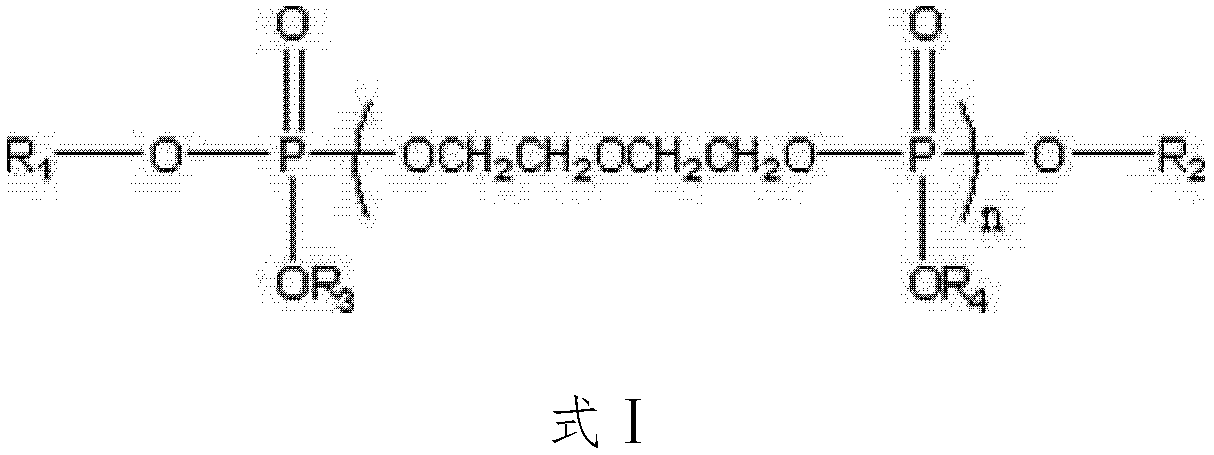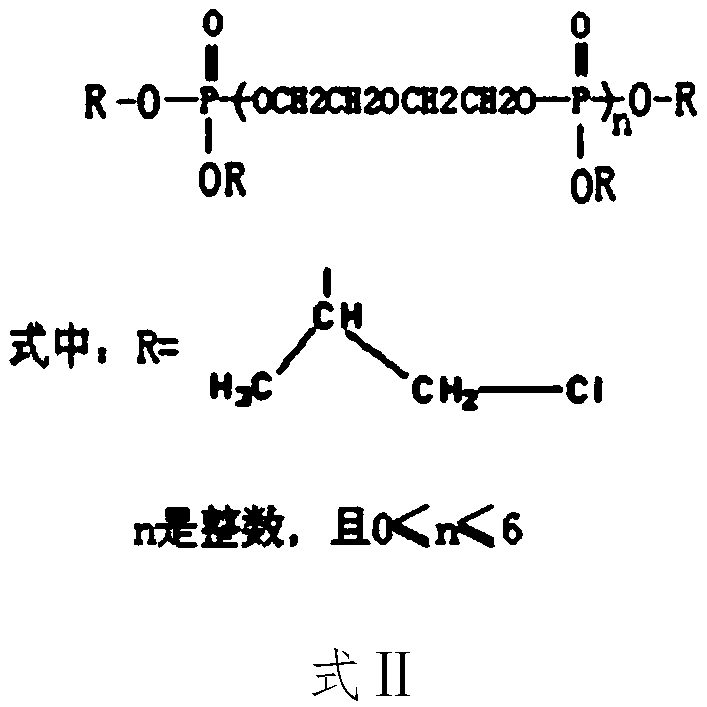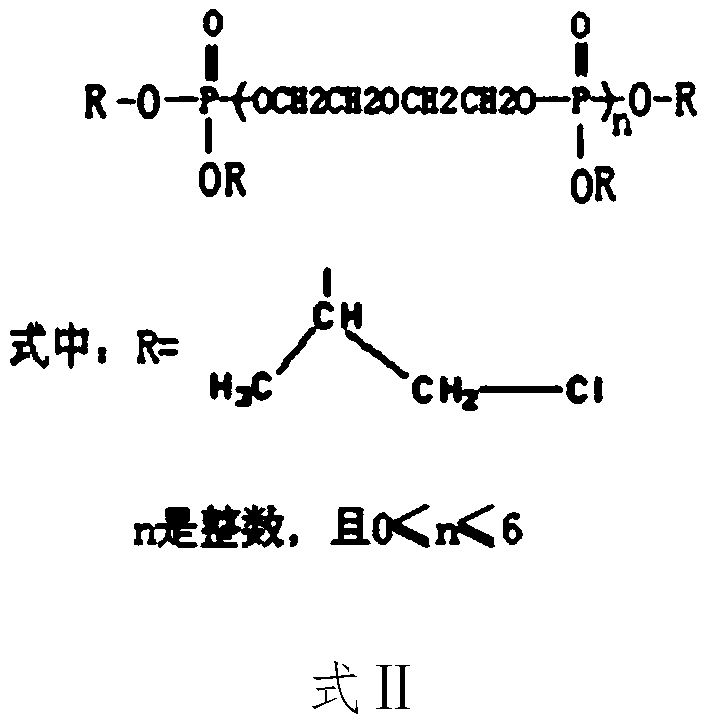Polyurethane foam composite flame retardant and preparation method thereof
A composite flame retardant and polyurethane foam technology, applied in the field of flame retardants, can solve the problems of reduced flame retardant performance and atomization performance, poor flame retardant effect, environmental pollution, etc., achieve low atomization value, save alkali Washable, excellent flame retardant effect
- Summary
- Abstract
- Description
- Claims
- Application Information
AI Technical Summary
Problems solved by technology
Method used
Image
Examples
Embodiment 1
[0062] Add phosphorus oxychloride (1500g, 9.78mol) and catalyzer magnesium chloride (1g, be equivalent to 0.067% of phosphorus oxychloride weight) in reactor, be heated to 55-60 ℃ under stirring, begin to feed propylene oxide ( 2000g, 34.44mol) (the molar ratio of phosphorus oxychloride to propylene oxide is 1:3.52), the balance of temperature and cooling rate is strictly controlled during the feeding process, until the rated amount of epoxy compound is passed through, and the Keep warm at 55-60°C for another 3 hours, and recover the epoxy compound by vacuum distillation after the reaction. During vacuum distillation, vacuumize for 0.5 hours, and control the vacuum degree at 50-60KPa. After distillation, keep the vacuum at 50-60°C Phosphorus oxychloride (2300g, 15mol) and diethylene glycol (1060g, 9.99mol) were added dropwise at the same time, the temperature was controlled at 55-60°C, and the dropping time was 3-5 hours. During the reaction, a large amount of acid was directly...
Embodiment 2
[0064] Add phosphorus oxychloride (3100g, 20.22mol) and catalyst titanium tetrachloride (3.g, equivalent to 0.097% of the weight of phosphorus oxychloride) in the reactor, heat to 55-60°C under stirring, and start continuous Enter propylene oxide (6500g, 111.91mol) (the mol ratio of phosphorus oxychloride and propylene oxide is 1:5.54), the balance of temperature and cooling rate is strictly controlled in the feeding process, until the epoxy compound of rated amount is passed through, After passing through the material, keep the temperature at 55-60°C for another 3 hours. After the reaction, the epoxy compound is recovered by vacuum distillation. During the vacuum distillation, vacuumize for 0.5 hours, and the vacuum degree is controlled at 45-55KPa. After the distillation, keep the vacuum , drop phosphorus oxychloride (4166g, 27.17mol) and diethylene glycol (2060g, 19.41mol) at 35-60°C, control the temperature at 40-45°C, drop time for 4-5 hours, during the reaction A large a...
Embodiment 3
[0066] Add phosphorus oxychloride (1500kg, 9.78kmol) and catalyzer magnesium chloride (1KG, be equivalent to 0.067% of the weight of phosphorus oxychloride) in reactor, be heated to 55-60 ℃ under stirring, start to feed propylene oxide ( 2000Kg, 34.44kmol) (the molar ratio of phosphorus oxychloride to propylene oxide is 1:3.52), the balance of temperature and cooling rate is strictly controlled during the feeding process, until the rated amount of epoxy compound is passed, and after the feeding is completed, the Keep warm at 55-60°C for another 5 hours, and recover the epoxy compound by vacuum distillation after the reaction. During vacuum distillation, vacuumize for 1 hour, and the vacuum degree is controlled at 40-50KPa. After distillation, keep the vacuum at 35-60°C Phosphorus oxychloride (2300kg, 15kmol) and diethylene glycol (1060kg, 9.99kmol) were added dropwise, the temperature was controlled at 45-50°C, and the addition time was 4-6 hours. After the addition, N-methylm...
PUM
| Property | Measurement | Unit |
|---|---|---|
| Viscosity | aaaaa | aaaaa |
Abstract
Description
Claims
Application Information
 Login to View More
Login to View More - R&D
- Intellectual Property
- Life Sciences
- Materials
- Tech Scout
- Unparalleled Data Quality
- Higher Quality Content
- 60% Fewer Hallucinations
Browse by: Latest US Patents, China's latest patents, Technical Efficacy Thesaurus, Application Domain, Technology Topic, Popular Technical Reports.
© 2025 PatSnap. All rights reserved.Legal|Privacy policy|Modern Slavery Act Transparency Statement|Sitemap|About US| Contact US: help@patsnap.com



